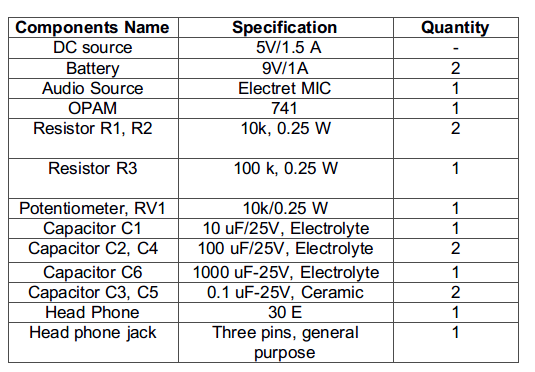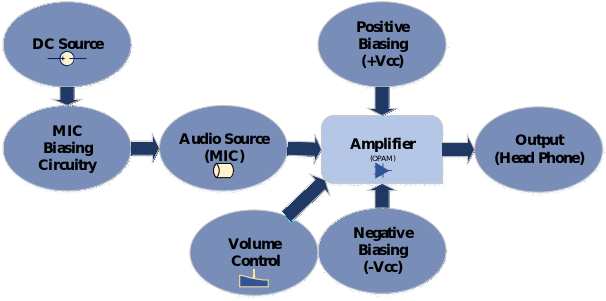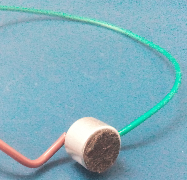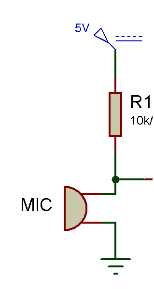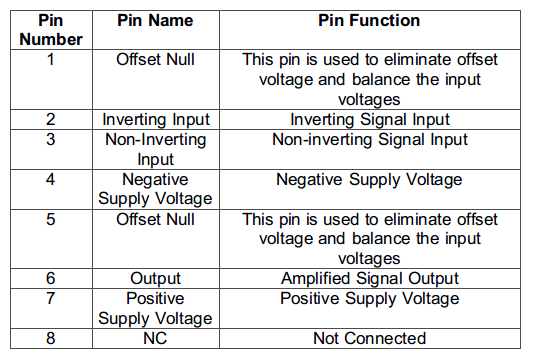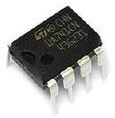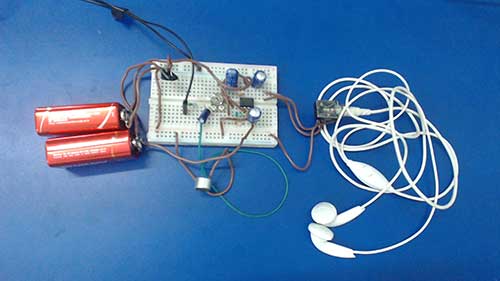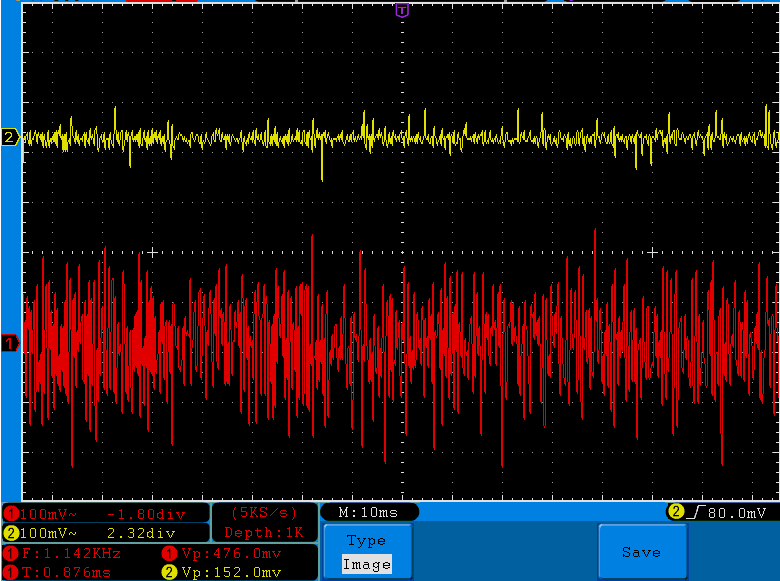Continuing with the design of application-specific power amplifiers, in this tutorial a low-power amplifier will be designed for common mobile headphones. In the previous tutorial, a car audio amplifier was designed using IC TDA2003.
Mobile headphones are a type of miniature speaker designed especially for use with smartphones. These headphones do not have louder sound output. However, the sound quality can be improved by using an amplifier circuit with them. For headphones, a low-power amplifier needs to be designed. The amplifier needs to be designed so that its audio output remains noise-free and controllable, especially at peaks (high amplitudes or loud sounds). Care must be taken that even after amplification, the volume remains at a comfortable level, as louder sound output can be unpleasant with headphones and can also be more noisy.
When an amplifier is designed for any typical speaker, the amplifier circuit has to deal with a narrow range of load impedance, typically 4 ohms to 8 ohms. Therefore, it is easy to design an amplifier for normal speakers. However, when an amplifier circuit has to be designed for headphones, a major problem arises due to the difference in standards followed by different manufacturers. Headphones from different manufacturers have different impedances. Generally, the impedance of a headphone can range from 16 ohms to 600 ohms. This creates a serious compatibility problem. Additionally, headphones with a lower impedance of 32 ohms or less may work with most devices, but headphones with a higher impedance may not work with all devices.
In this tutorial, a general-purpose low-power audio amplifier for headphones with 30 ohm impedance will be designed. The amplifier circuit is designed using LM741 OPAM IC. LM741 is a general purpose operational amplifier IC. The amplifier circuit will be operated by a 9V battery. The output power of this amplifier circuit will be 1 milli Watt. In fact, the LM741 can have a supply voltage of up to 22 V and input signal amplitudes (input voltage) of up to 15 V.
In the introductory article of this series, various design parameters of audio amplifier circuits were discussed such as gain, volume, slope rate, linearity, bandwidth, clipping effect, stability, efficiency, SNR, output power, THD and grounding. loop. This amplifier circuit will be designed considering the following design parameters –
Gain (voltage) – 20 dB
Bandwidth – 20 Hz to 20 KHz
Output power – 1 mW
The amplifier will be designed to deliver audio to a headphone with an impedance of 30 ohms. The circuit will have the following additional features –
– No clipping effect
– Volume control
Circuit design will be followed by circuit testing to verify the intended design factors.
Required components –
Fig. 1: List of required components for low power headphone power amplifier based on 741 OPAM IC
Block diagram –
Fig. 2: Block diagram of low power headphone power amplifier based on 741 OPAM IC
The amplifier circuit is constructed by assembling the following components –
1) DC Source – There are two power sources required in this circuit. A 5V power supply is required for polarization of microphones, while a 9V power supply is required for the OPAM circuit. The 9V DC source is required to supply the bias voltage to the amplifier. To supply 5V, two 9V batteries are connected in parallel.
2) Audio source – An electret MIC was used as the input source. The electret MIC requires a bias voltage between 1 to 5 V to power the built-in FET buffer that is present in the MIC.
Figure 3: Typical electret microphone image
Generally, this microphone is powered by 1V to 5V DC through a resistor with a value of 1K ohms to 10K ohms. The bias circuit for this microphone has been shown below –
Fig. 4: Electret Microphone Bias Circuit Diagram
3) LM741 operational amplifier IC – LM741 is a general purpose OPAM (operational amplifier) with low input impedance (mega ohm) compared to FET OPAM. The OPAM FET has high input impedance in Giga ohms. The output impedance of the 741 should ideally be zero, but is usually around 75 ohms. The maximum supply current of the 741 IC is about 2.8 mA with a supply voltage of up to +/- 18V. The IC has the following pin configuration –
Fig. 5: Table listing the pin configuration of the LM741 operational amplifier IC
The IC has the following pin diagram and functional diagram –
Fig. 6: LM741 operational amplifier IC pin diagram
The IC comes with input and output overload protection, in addition to not locking when the common mode range is exceeded. The IC can receive a positive or negative supply voltage of up to 22 volts and the input signal voltage (amplitude) can be up to 15 V. Under normal conditions, the IC should receive a voltage of 10 V, positive or negative. The IC has the following internal circuit –
Fig. 7: Internal Circuit Diagram of the LM741 Operational Amplifier IC
The LM741 can be configured as an open or closed loop amplifier. It can be used as an inverting amplifier or non-inverting amplifier. In this circuit, IC LM741 was used as an inverting amplifier as the microphone input signal is applied to the inverting input pin (pin 2) of the IC. Inverting amplifier has negative feedback which makes them better than non-inverting amplifiers. The inverting amplifier changes the phase of the output (signal amplitude) by 180 degrees with the input (signal amplitude). However, this phase reversal does not affect the audio signal, as human ears only respond to sound intensity. Intensity is the energy that flows through an area in a given time, expressed in joule/s/m2. The energy of the wave is proportional to the square of its amplitude. Therefore, for a unit area, the intensity is also proportional to the square of the amplitude.
I A2
Changing the sign of the wave has no effect on I.
Figure 8: Typical image of operational amplifier IC LM741
The audio input from the microphone is passed to the inverting input pin of the IC LM741 through a variable resistor (shown as RV1 in the circuit diagram). This variable resistor helps to adjust the amplitude (voltage level) of the input audio signal, therefore it also adjusts the volume of the output signal. The volume or amplitude of the output signal remains linearly proportional to the amplitude of the input signal by the voltage gain factor.
The supply voltage for the IC is supplied at pins 4 and 7 through filter capacitors. At pin 4, two capacitors (shown as C4 and C5 in the circuit diagram) of 100 uF and 0.1 uF are connected while at pin 7, two capacitors (shown as C2 and C3 in the circuit diagram) of 100 uF and 0 ,1 uF are connected. High value capacitors like C2 at pin 7 and C4 at pin 4 help in high frequency filtering of the supply voltage and low value capacitors like C5 at pin 4 and C3 at pin 7 help in low frequency filtering of the supply voltage . Negative feedback is provided to the amplifier through a resistor (shown as R3 in the circuit diagram) of 100 K ohms. At the output pin (pin 6) of the amplifier, a filtering capacitor (shown as C6 in the circuit diagram) is connected to block any DC components from the amplifier to the headphone jack as the DC components (due to the clipping effect) may damage the headphone or add noise and distortion to the audio output.
4) Headphone – The amplified audio output is taken from pin 6 of the IC. A headphone with an impedance of 30 ohms is used as the output load. The headphone is connected to the circuit using a female headphone jack. One of the female connector wires is connected to the amplifier IC output pin, while the other female connector wire is connected to the common ground. The output impedance of the amplifier should not be too high for headphones with lower impedance. Therefore, LM741 generally has an output impedance of 75 ohms, which is suitable for headphones with an impedance of 30 ohms.
Fig. 9: Typical image of mobile headset with female audio input
The following precautions should be taken while assembling this circuit –
1. Always place components as close together as possible to reduce noise in the circuit
2. Follow star topology when grounding, this will keep the noise low.
3. Use high voltage rating capacitor instead of input signal.
4. Always use the filtering capacitor on the power supply input terminal to avoid unwanted ripple.
5. Use the equivalent or high power speaker as the amplifier output power.
6. Always use a capacitor in series across the amplifier output to block any DC components.
7. Always calculate the maximum power of the amplifier before connecting it to the speaker. The practical value may differ from the theoretical one.
8. Avoid clipping the output signal as this may damage the speaker.
Fig. 10: Low power headphone power amplifier prototype based on 741 OPAM IC
How the circuit works –
The LM741 operational amplifier was configured as an inverting amplifier in a closed-loop configuration. The electret MIC input signal has an amplitude in the range of 1 mV to 10 mV when the user speaks in a normal voice. In the case of a scream, the input level can increase up to 50 mV. Therefore, the average value of the input signal can be considered 20 mV. The maximum voltage that must be obtained at the output is 200 mV. Therefore, the desired voltage gain can be calculated as follows –
Gain = Vout/Vin
since Vout = 200 mV and Vin = 20 mV
Gain = (0.2/0.02)
Desired Gain = 10
Therefore, the desired gain is 10 or 20 dB. In the circuit, the voltage gain can be defined through the network of resistors R2 and R3 where the gain can be calculated as follows –
Gain = -(R3/R2)
If resistor R2 is assumed to be 10K ohms and the desired gain is 10 or 20 dB, then the value of resistor R3 is obtained as follows –
R3 = Gain * R2
R3 = 100K ohms
The negative sign means the inversion in the output. Therefore, a 10K ohm resistor is used as R2 and a 100K ohm feedback resistor R3 is used in the circuit. The amplifier provides an output signal that is 10 times the input signal.
Testing the circuit –
For testing the amplifier circuit, the function generator is used as the input source. The function generator is used to generate a sine wave of constant amplitude and frequency. Any audio signal is also basically a sine wave, so a function generator can be used instead of a microphone or actual audio source. Thus, the function generator can be used as an input source to test the audio amplifier circuit. During testing, also at the output, a headphone is not used as a load, as the headphone speaker is resistive as well as inductive. At different frequencies, its inductance changes, which in turn changes the impedance (R and L combination) of the speaker. Therefore, using a headphone as a load on the amplifier output to derive its specifications may generate false or non-standard results. In place of the headphone jack, a purely resistive dummy load is used. Since the resistance does not change with frequency, it can be considered a reliable load regardless of the frequency of the input audio signal.
To test the amplifier circuit, first the input voltage is set within the applicable range between 10 mV and 50 mV. The frequency of the input signal is set to 1 KHz. Then, the output waveform is observed in CRO and the input signal is boosted until the output waveform begins to clip.
With dummy load of 20 ohm impedance, the following observations were noted –
Fig. 11: Table listing the output characteristics of the low power headphone power amplifier based on 741 OPAM IC
It was observed that the output voltage began to decrease by 200 mV. Therefore, the output power of this amplifier can be calculated as follows –
Output power, Po = V2(pp)/2R
Po = (0.2*0.2)/(2*20)
Po = 1 mW
Therefore, this amplifier has a maximum power of 1 mW. By observing the input and output waveforms of the amplifier on a DSO digital storage oscilloscope, the following waveforms were observed.
Fig. 12: Plot of headphone audio amplifier input and output waveforms observed on the digital storage oscilloscope
In the above figure, the yellow waveform is the input waveform of the amplifier circuit, while the red waveform is the output waveform of the amplifier. It can be seen that the input signal is amplified almost 10 times at the output of the amplifier. Additionally, there is no clipping effect on the output waveform.
This headphone amplifier is simple and inexpensive to design. It has a small circuit and can be assembled in a compact space. This is an exciting do-it-yourself circuit to try out and can be used with a regular headphone jack of any smartphone.
In the next tutorial, a stereo amplifier will be designed. Until now, amplifier circuits have been designed for single-channel audio . In a stereo audio system, there are many audio channels output from different speakers forming a surround system. For such audio systems, stereo amplifier that can amplify multiple audio channels is necessary.
Project video
